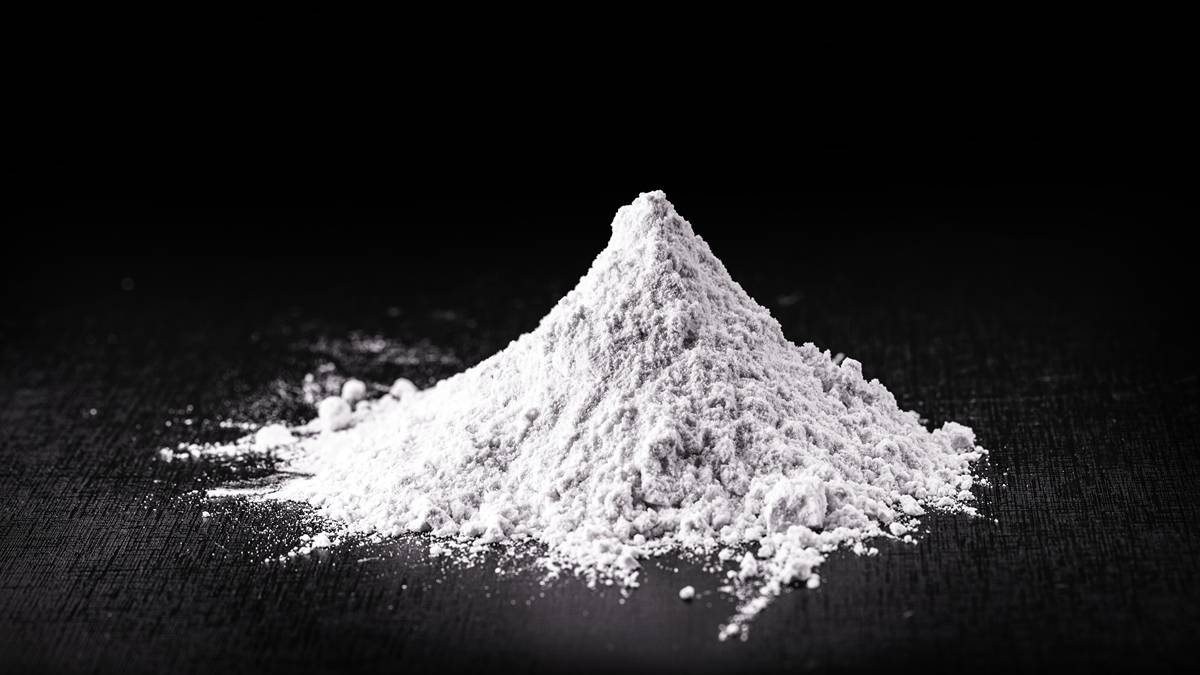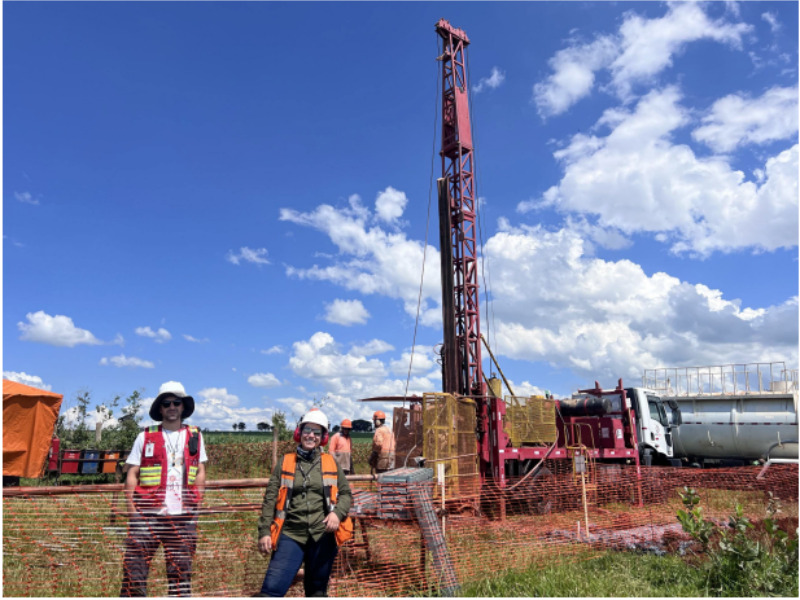Resources Top 5: Titanium rocket sends Equinox soaring

Equinox is rising on strong titanium dioxide drill results in Brazil. Pic: Getty Images
- Equinox shoots higher on near surface titanium grades in Brazil
- QML rocks Queensland mining market with copper hits
- Element25 gets approval to expand Butcherbird manganese operation
Your standout small cap resources stocks, Monday, January 13, 2025.
EQUINOX RESOURCES (ASX:EQN)
ASX explorer Equinox Resources has given its Mata da Corda project in Brazil’s closely watched Minas Gerais State a major shot in the arm, rolling out what it describes as “exceptional” titanium hits with niobium and rare earth kickers in drilling ahead of a maiden mineral resource estimate.
The Brazilian minerals hotspot has become one of the hottest exploration postcodes in the world in recent times. Known for its bounty of high-grade iron ore, lithium and niobium, recent rare earths discoveries rivalling the scale and grade of shallow deposits in world leaders China have seen numerous explorers head to the South American powerhouse in search of a major find.
Mata da Corda has moved higher up the watchlist on the recent drill hits, which included an intercept of 61.2m at 11.89% titanium dioxide from surface. Over 1900 drill samples average 10.23% TiO2, with a standard deviation of just 3.3% – something EQN says shows the consistency of its grade profile.
298 intercepts across 504.8m from 43 drill holes clocked grades of over 10% TiO2, with the wide hit mentioned above in hole MC_DD24_015 pipped for grade by a number of strikes, including 37.3m at 12.66% TiO2 and 12m at 15.32% TiO2.

High grade rare earths and niobium were also found in strikes from surface, including a highlight of 37.3m at 2400ppm total rare earth oxides (23% of that high value magnet rare earths) in hole MC_DD24_030.
Titanium dioxide has a number of critical uses including solar panels and welding, but is most commonly processed as a pigment for whitening paint, ceramics, fabrics, cosmetics and sunscreen.
Along with its niobium and rare earths results, EQN says the Mata da Corda project has multi-commodity potential.
“These high-grade titanium intercepts, averaging 10.23% TiO₂ with a consistent grade profile and homogenous distribution, highlight the strong mineralisation continuity of the Mata da Corda Project. Combined with the potential for niobium and rare earth co-product credits, this district-scale discovery, staked just a year ago, marks a pivotal achievement,” MD Zac Komur said.
“These latest results advance us toward our target of delivering our maiden Mineral Resource Estimate in H1 CY2025 and demonstrate the substantial value being built within our portfolio.”

EQN says titanium is emerging as the main value driver for the deposit, an important aspect of the future resource given the volatility of recent rare earths pricing.
QMINES (ASX:QML)
Few headlines excite in mining right now quite like high-grade copper.
And QMines certainly delivered that in drill hits from its Develin Creek project in Queensland.
The project is an important one. Acquired from Zenith Minerals (ASX:ZNC) last year, it will lend weight and scale to the company’s flagship Mt Chalmers project in Queensland’s south as a nearby satellite with strong copper and zinc grades.
Its latest results were eye-catching, with drilling including 43 holes for 5034m and shallow intercepts returning copper grades at the Scorpion deposit not all too often seen in this day and age.
They included:
- 20m at 2.94% Cu, 0.42g/t Au, 20g/t Ag and 1.4% Zn from 46m
- Including 6m at 4.16% Cu from 57m
- 30m at 1.58% Cu, 0.45g/t Au, 23g/t Ag and 2.82% Zn from 61m
- Including 5m at 3.63% Cu from 68m
- 17m at 2.15% Cu, 0.42g/t Au, 20g/t Ag and 2.18% Zn from 102m; and
- 15m at 2.54% Cu, 0.45g/t Au, 18.3g/t Ag and 1.54% Zn from 83m
- Including 8m at 3.87% Cu from 86m.
Located 90km northwest of Rockhampton, the project already hosts 3.2Mt at 1.05% copper, 1.22% zinc, 0.17g/t gold and 5.9g/t silver, with an update due shortly.
“We have now completed an initial 5,000-metre drilling program at Develin Creek. The program consistently intersected wide high-grade intersections at the Scorpion and Window deposits. This is an excellent start to the new year which will be followed up shortly by further drilling results and an updated mineral resource estimate at each of these deposits,” exec chair Andrew Sparke said.
A PFS last year put a $191m price tag on the development of Mt Chalmers, which could run for over a decade with a standalone 1Mtpa process plant, producing 65,000t of copper, 160,000oz of gold and generating $636 million free cash flow over its life, with an IRR of 54%.
ELEMENT 25 (ASX:E25)
Manganese has been a staple for decades in the WA resources scene, but weak prices caused by a plateauing Chinese steel sector has stalled the development of new resources in recent times.
There have been some improvements over the past year. Notably, the wipeout of South32 (ASX:S32) and Anglo American’s world class Groote Eylandt ops in the Northern Territory last year which took a major high-quality supplier out of the market.
And with steel demand unlikely to grow materially in the near term, the sector’s emerging players are pivoting to the emerging battery market to future proof their positions.
Element 25 is among the early movers, securing investment from US and European automakers Stellantis and General Motors for a plant in Louisiana to produce high-purity manganese sulphate – a key ingredient in nickel-rich lithium ion battery chemistries used in long-range electric vehicles and increasingly in cheaper lithium-iron-manganese-phosphate cathodes.
Key to that supply chain is E25’s Butcherbird mine in the Pilbara region of WA. Some good news there: WA’s mines department – the wordy Department of Energy, Mines, Industry Regulation and Safety – has given approval to a mining proposal for an expanded operation that could produce up to 1.1Mtpa of manganese concentrate for 12 years.
A tailings storage facility is fully approved to support operations for six years via staged lifts, with a long term plan in place for waste material deposited after that point.
A works approval, which would enable construction of the Stage 2 plant to begin, is the only final regulatory hurdle, with aspects including native title already sorted ahead of the pilot Stage 1 project.
Butcherbird produced 436,498t at an average concentrate grade of 29.7% Mn in its initial operating life from April 2021 to June 2023. E25 has since increased resources 6% to 274Mt at 10% Mn, with measured and indicated resources up a combined 142% to 14Mt at 11.3% Mn and 116Mt at 10.1% Mn respectively.
According to a study early last year the expansion to 1.1Mtpa was expected to cost close to $50m. Its HPMSM plant in the US was selected for a US$166m grant from the US Department of Energy in September. The company’s shares have lifted 27% since that announcement.
WEST COBAR METALS (ASX:WC1) and ANTILLES GOLD (ASX:AAU)
We tend to let moves in $7.5 million tiddler Antilles Gold slide with its 1.86bn shares on issue and tiny share price.
But there is at least some news behind today’s move, with 90 trades and close to $91,000 of shares changing hands after it shared the PFS for its half-owned Nueva Sabana copper-gold mine in Cuba.
Based in the land of Fidel Castro, missile crises and a memorable sequence in Francis Ford Coppola’s Godfather 2, AAU says its JV with a Cuban partner would cost a tidy US$37.9m ($59.2m), including pre-development works and concession acquisition, to bring into production.
Starting in Q1 2026, the operation would boast a four-year mine life, extracting 500,000tpa from a shallow open pit to process into separate gold and copper-gold concentrates. At assumed prices of US$2250/oz gold and US$9000/t copper, the mine would deliver a new profit with taxations waived of US$99.1m ($152.5m), with AAU’s share of surplus cash to clock in at $71m.
West Cobar meanwhile was up on no news, its most recent dispatch about some test results showing positive copper and antimony recoveries from lab-based flotation testing at the Bulla Park project in New South Wales.
At Stockhead, we tell it like it is. While Equinox Resources and QMines are Stockhead advertisers, they did not sponsor this article.

UNLOCK INSIGHTS
Discover the untold stories of emerging ASX stocks.
Daily news and expert analysis, it's free to subscribe.
By proceeding, you confirm you understand that we handle personal information in accordance with our Privacy Policy.








